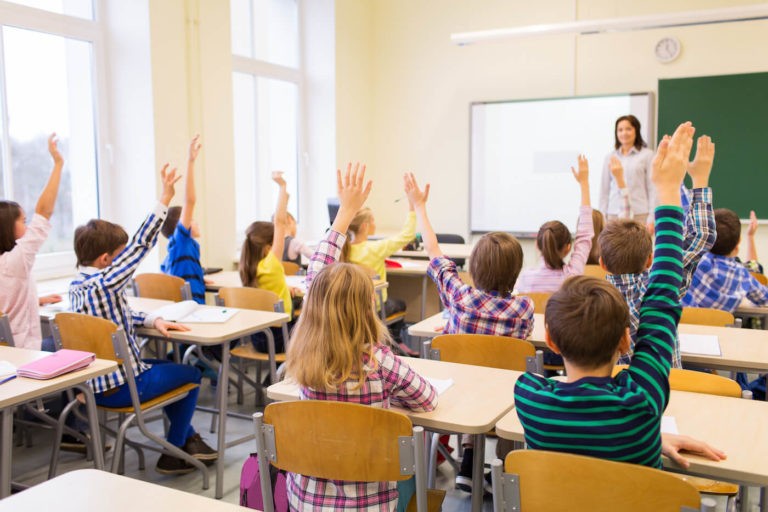Student engagement determines if a teacher’s lesson is effective and ultimately validates if students are learning. Teachers look for engagement indicators, emotional responses, behavioral reactions, or cognitive results. Teachers are always searching for the best way to achieve student engagement with every group of students assigned to the class. Here are a few student engagement strategies to try in your classroom.
Student Engagement Strategies
Environment
Teachers spend the summer deciding on the classroom theme and setting up for the school year. The theme creates the culture or mood for the year. Students sense the warmth and welcoming feeling of a classroom. Students begin to connect with the teacher when a sense of ease and comfort is felt in the classroom. Upon making a connection with the environment, students and teachers begin to grow relationships. A classroom’s decorations can change within the school year to create a sense of excitement and great anticipation for a student to come to school. Seasonal themes to match the current weather conditions or sports themes to commemorate a specific sporting event (e.g. Super Bowl in February) are appropriate décor changes within a school year.
A popular idea among teachers is classroom transformations. Transforming the classroom for one day to support a concept being taught encourages excitement among students in the classroom. Teachers can turn the classroom into a coffee shop for the morning and set up independent math activities that relate back to experiencing time spent in a coffee shop. The teacher dresses up as a barista and hands out hot chocolate after each student completes the required activities during the transformation period.
A student’s classroom for the year is a home away from home. Students need to feel connected and vulnerable in an effort to fulling engage with the instruction given by the teacher.
Movement
Students and teachers are not meant to sit all day. Each participant in a classroom relies on constant blood flow to maintain the brain’s engagement to learn. Students need to stand, sit or lie on the floor, sit with legs crossed, or walk around the room. Teachers need to do the same. Teachers can incorporate body movement in the lessons by asking students to respond to a question with movement.
Students can work in small cooperative groups sitting around the classroom using lap desks or clipboards to complete assignments. Teachers can provide listening devices to students and take a walk outside or around the school building while listening to an informational podcast. Students can play charades to practice learning vocabulary definitions. Teachers can fill a classroom with flexible seating that best suits the needs of students needing a seat to help create engagement.
It is important for teachers to travel around the classroom to engage with students, check on progress, redirect learning when needed, and model the importance of active learning.
Technology
Today’s smart phone or tablet technology can distract a student’s engagement. A teacher can capitalize on students’ interest and knowledge of technology by providing a moderate and appropriate amount of technology into a lesson. The student’s knowledge of technology gives a sense of independence and motivation to create a product. Project-based learning added technology to a list of tools and options for a student to select from when engineering a plan to solve a problem. Many STEM curriculums use technology to engage students in the critical thinking process.
Teachers do not need to know everything about the technology used by students. An important aspect of technology is the ability of a student to experience something new such as writing a blog, designing a webpage, coding, or using a green screen to create a project. Teachers that are experts on a certain type of technology do command a level of respect and engagement from a student. A student may admire a teacher’s technology expertise lending an opportunity for a relationship to develop between student and teacher. Most students are eager to learn by using technology and therefore making the lesson more engaging.
Entertainment
Flashy images in video games or cartoons attract a student’s attention; how can a teacher compete? Teachers must be creative and open to teach “out of the box.” Teachers can dress up as a character from a book, historical figure, or a character a student can learn from, maybe a “Rock Star” math teacher with a catchy tune about long division steps. Teachers do not have to dress up alone; students can join in as well. Book reports and research papers come alive when students dress up as the book character or figure researched. Students share the knowledge about the person portrayed while dressed as the person.
Teachers can assign a group of students to perform a skit to present the knowledge learned, and it can be adapted to any subject, even math. Another option for presentations can be creating a podcast for other students to listen to or students reciting poetry in front of peers. Students enjoy making videos and presenting the video production. Entertainment engages a student’s attention and opens the mind to creativity.
Questions
Teachers ask questions to gauge the class’s understanding during a lesson. At times students feel “on the spot” or unprepared to answer the question. Teachers can change this process by having students write down questions and “turn and talk” to other classmates to generate discussions about the topic. Allowing time to talk freely with peers encourages engagement for lessons.
In an effort to create student engagement during instruction and assess the knowledge students are gaining from the lesson, teachers must ask questions. A fun idea for teachers gathering knowledge from students with asking questions is to give all students dry erase boards to record answers and hold over head for the teacher to check. Teachers can also use exit tickets to measure the knowledge students have retained and can apply after the lesson is taught.
Student engagement is obvious curiosity, zealous interest, or optimum passion expressed by students while learning in the classroom.
*Updated August, 2020




